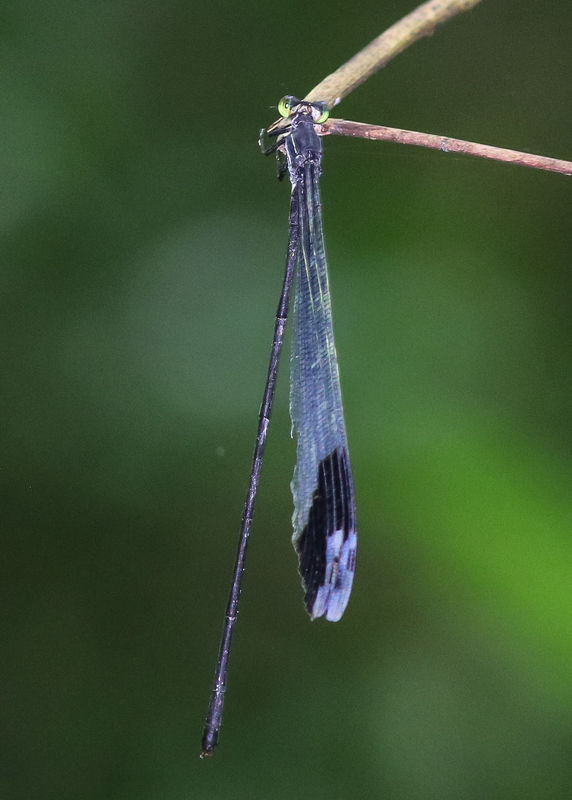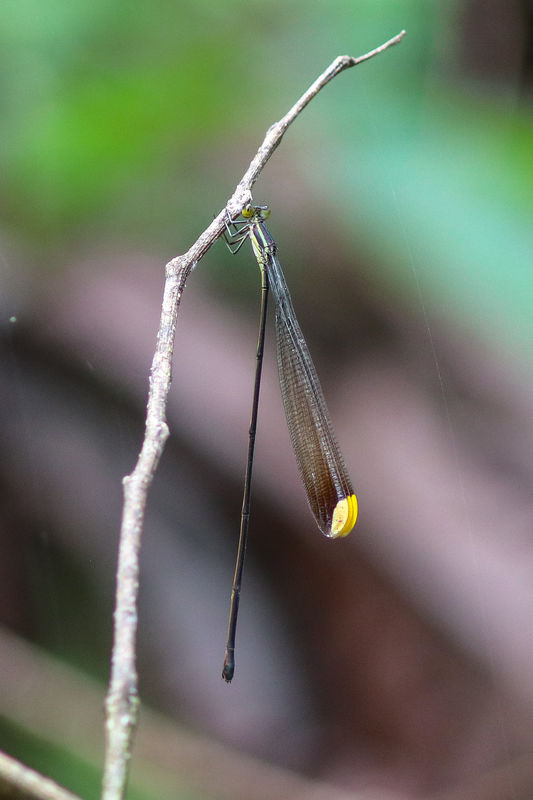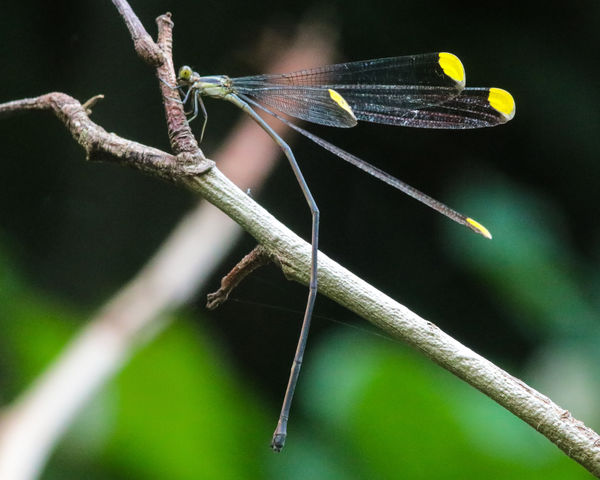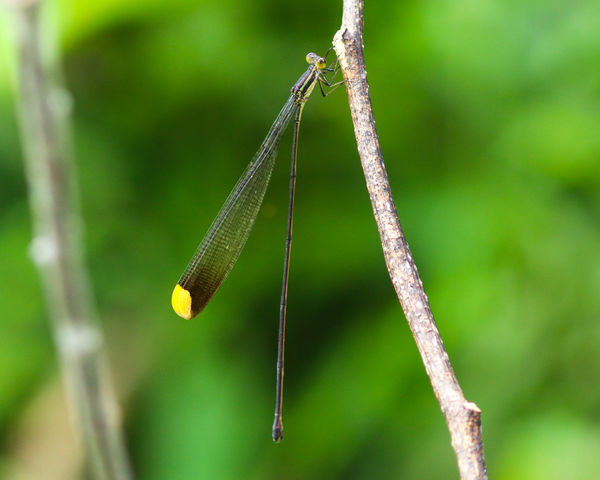Costa Rica Expedition Series: Part 2 - Pseudostigmatidae or Forest Giants (Damselflies)
Jul 26, 2017 22:33:39 #
Like hunting Odes anywhere you may go out with a certain species in mind to photograph. Before going on this expedition I really wanted to photograph at least one of the Pseudostigmatidae or Forest Giant damselflies. They are the largest of any dragon or damselfly in the world. Their wing span is around 7" and their body length about 5". It was very difficult to get into good position to photograph these amazing Odes in the dense jungle. Sometimes you had to shoot into the sun.
This family of damselflies breed in holes in trees, bamboo, fruit hulls or tank bromeliads that are filled with water. These are fiercely guarded by the males. They will fly up one side of a tree and down the other looking for spiderwebs. Their main food is soft bodied spiders. They will carefully approach the web grab the spider and back away from the web so as not to become entangled in it. If there is no spider they may steal the prey of the spider that is in the web.
I was luck to find two species. I hope you enjoy them even though there is no way to judge their size from the photographs.
-Doc
This family of damselflies breed in holes in trees, bamboo, fruit hulls or tank bromeliads that are filled with water. These are fiercely guarded by the males. They will fly up one side of a tree and down the other looking for spiderwebs. Their main food is soft bodied spiders. They will carefully approach the web grab the spider and back away from the web so as not to become entangled in it. If there is no spider they may steal the prey of the spider that is in the web.
I was luck to find two species. I hope you enjoy them even though there is no way to judge their size from the photographs.
-Doc
Blue-winged Helicopter (Megaloprepus caerulatus)

(Download)
Ornate Helicopter (Mecistogaster ornata)

(Download)

(Download)

(Download)
Jul 26, 2017 22:42:24 #
Jul 26, 2017 22:56:39 #
Amazing! What is the range of any of them this size? I do think, though you mentioned it would be difficult to judge
their size from the pictures, that actually it is shown very well against the twigs they're on.
their size from the pictures, that actually it is shown very well against the twigs they're on.
Jul 26, 2017 22:59:18 #
sailorsmom wrote:
These are so beautiful, Doc!
I'm so glad you liked them Sue. I wish you could see them fly. Then you would know why they call them helicopters. Very strange flight. Finally some cooler weather.
-Doc
Jul 26, 2017 23:24:30 #
jenny wrote:
Amazing! What is the range of any of them this size? I do think, though you mentioned it would be difficult to judge
their size from the pictures, that actually it is shown very well against the twigs they're on.
their size from the pictures, that actually it is shown very well against the twigs they're on.
Well Jenny the smallest female species has a body length of 58 mm or 2.2 inches. Most other species in this family are much larger with males body length around 5". They were amazing to see and it made the expedition for me.
-Doc
Jul 27, 2017 00:14:26 #
Jul 27, 2017 03:05:57 #
Jul 27, 2017 05:55:48 #
Jul 27, 2017 06:30:34 #
Jul 27, 2017 06:34:43 #
The world is full of unusual creatures and you definite found a winner with this series! Very well done shots.
Jul 27, 2017 06:43:44 #
docshark wrote:
Like hunting Odes anywhere you may go out with a c... (show quote)
Doc, excellent series. I also enjoyed the excellent education you always supply.





Greg
Jul 27, 2017 06:45:09 #
Jul 27, 2017 07:00:57 #
Fascinating information and cool shots, Doc. You must have felt like you were in heaven 

Jul 27, 2017 07:33:39 #
Jul 27, 2017 08:00:00 #
jenny wrote:
I was meaning the range where the large ones occur, e.g. Costa Rica only?
So sorry Jenny. They range from central Mexico through Central America the the Northwest of South America. All genus are neotropical.
-Doc
If you want to reply, then register here. Registration is free and your account is created instantly, so you can post right away.










